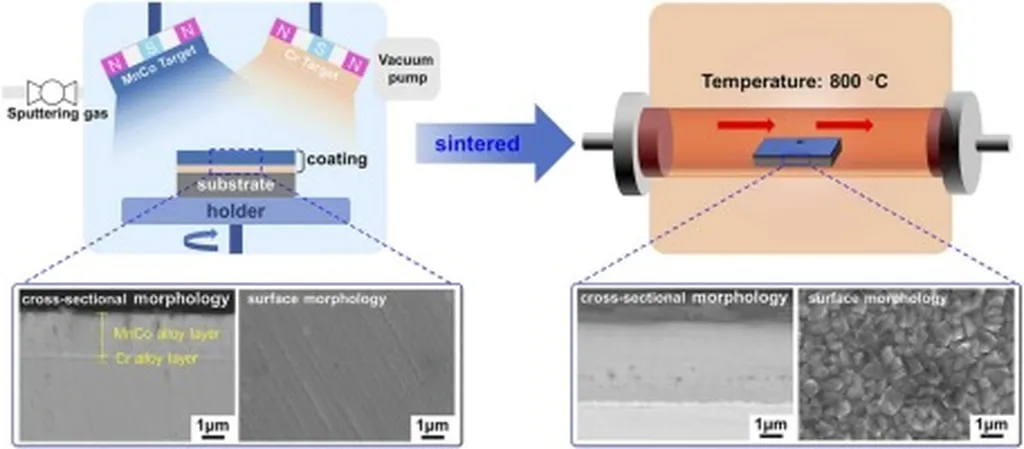In the relentless pursuit of materials that can withstand the harshest environments, researchers have made a significant stride in the realm of high-temperature corrosion resistance. A recent study published in the journal *Corrosion Communications* (which translates to *Corrosion Communications* in English) has unveiled promising findings that could revolutionize the energy sector, particularly in applications where materials are subjected to extreme thermal cycling and corrosive conditions.
The research, led by Zheng Chen of the University of Science and Technology of China and the Shi-changxu Innovation Center for Advanced Materials at the Chinese Academy of Sciences, focuses on the development of nano-modified organic silicone coatings for 304 stainless steel (304SS) substrates. The study explores the impact of incorporating nano-sized titanium (Ti) and aluminum (Al) powders into these coatings, aiming to enhance their resistance to cyclic corrosion tests that mimic real-world conditions.
The cyclic corrosion tests involved 22 hours of salt spray at 35°C followed by 2 hours of oxidation at 400°C, simulating the alternating environments that materials in the energy sector often encounter. The results were striking. The coating with 10 wt.% Ti powders demonstrated exceptional self-healing performance, the highest corrosion resistance, and the best hydrophobicity. “The self-healing capability of the Ti-modified coating is particularly noteworthy,” Chen explained. “It suggests that the material can repair minor damages autonomously, extending its lifespan and reducing maintenance costs.”
However, the addition of nano-Al into the coatings, while beneficial for enhancing hydrophobicity, led to spallation during the corrosion tests. This finding underscores the delicate balance between enhancing certain properties and maintaining overall material integrity. “The trade-off between hydrophobicity and spallation resistance is a critical consideration in the design of these coatings,” Chen noted. “Understanding this balance is key to developing materials that can perform reliably in demanding environments.”
The study’s findings have significant implications for the energy sector, where materials are often exposed to extreme conditions. For instance, in power plants, turbines, and other high-temperature equipment, the ability to resist corrosion and maintain performance over time is crucial. The self-healing and high-temperature corrosion resistance properties of the Ti-modified coatings could lead to more durable and efficient components, reducing downtime and maintenance costs.
Moreover, the correlation between hydrophobicity and corrosion resistance highlighted in this study opens new avenues for research. “By optimizing the hydrophobicity of these coatings, we can potentially enhance their performance in a wide range of environments,” Chen said. “This could lead to the development of materials that are not only more resistant to corrosion but also more versatile in their applications.”
As the energy sector continues to evolve, the demand for materials that can withstand extreme conditions will only grow. The research led by Zheng Chen and his team represents a significant step forward in this direction. By providing a deeper understanding of the interplay between hydrophobicity and corrosion resistance, this study paves the way for the development of next-generation materials that can meet the challenges of the energy sector head-on.
In the broader context, this research could inspire further exploration into the use of nano-modified coatings in other industries, such as aerospace, automotive, and marine applications. The potential for self-healing materials to extend the lifespan of critical components and reduce maintenance costs is immense, making this an exciting area of study for materials scientists and engineers alike.
As the energy sector continues to push the boundaries of what is possible, the insights gained from this research will be invaluable. By harnessing the power of nano-modified coatings, we can look forward to a future where materials are not only more resilient but also more adaptable to the ever-changing demands of our world.

